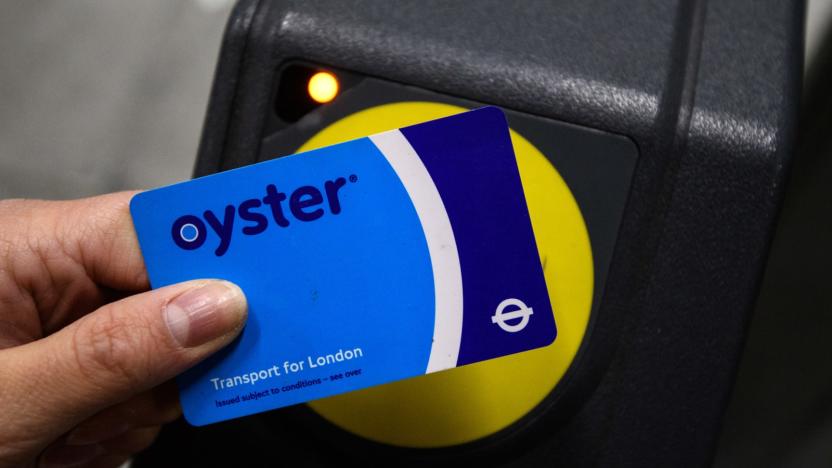OysterCard
Latest

Oyster card app simplifies top-ups in London
With the growing popularity of contactless payments, the humble Oyster card has a diminished role on the London Underground. Still, it's a useful option for tourists, children, or anyone who wants to keep a close eye on their travel spending. Today, Transport for London (TfL) has launched a mobile app for iOS and Android that makes it easier to top-up and review your balance. Once your account is set up, you can top-up from anywhere — no more queuing at a ticket machine. After 30 minutes, you simply need to touch a reader and the amount will be added on automatically.

London's Oyster cards are getting an app for easier top-ups
Contactless payments make it so easy to get around London that the trusty ol' Oyster card isn't as convenient as it once was. You can add funds or Travelcards online, for instance, but then have to wait 24 hours and tap in at a specific station to actually bring your card up to date. Transport for London (TfL) is making the Oyster card a little more 2017-friendly today, though, cutting that processing time down to 30 minutes and removing the need to visit a nominated stop. Tapping in at any train, Tube, tram or River Bus terminal will confirm the top-up, and by the end of autumn, buses will also be on that list.

London Underground: NFC mobile payment technology 'too slow' for the tube
While it's tested the idea several times in the past, London's Tube system won't be getting mobile-based payment technology any time soon. Customer Experience Director Shashi Verma told GigaOM that existing NFC technology wasn't able to drop below the 500 millisecond barrier -- something which Transport for London demands from its high-churn Oyster card-based turnstiles. Verma added, "The concerns are only around NFC technology and not EMV. We are keen to see any progress the industry can make in this area." At least for the near-future, it looks like Brits will have to glue their NFC cards to their phones if they want that contactless payment look while journeying around London.

Freecom's Hard Drive Secure for the businessman paranoid
It might be a butchering of English grammar -- the adjective typically goes before the noun -- but the Hard Drive Secure does have a pretty unique selling point to offer. The USB 2.0 drive's security is handled by AES-encrypted RFID keycards -- swiping the card once unlocks the drive, swiping it again locks it back up. Using similar technology to London's Oyster Card, we trust Freecom has made sure their new device is not susceptible to the Mifare hack that exposed vulnerabilities in previous RFID systems. Though not yet available to purchase, the aluminum-enclosed HDD will retail for between $119 for the 500GB version and $409 for the 2TB behemoth, while in Euroland prices will range between €99 and €349.[Via Bit Tech]

Oyster Card RFID hack gets detailed
The vulnerability of cards based on the Mifare Classic RFID chip (like the Oyster Card used for the London Underground) has been known for some time now but, unsurprisingly, some pesky legal business has prevented the complete details from being published. That has now finally been cleared up, however, and Professor Bart Jacobs and his colleagues from Radboud University have promptly published their complete paper online. What's more, NXP Semiconductors, makers of the Mifare chip, are also now commenting on the matter, and saying that it never intended to completely stop publication of the research, but rather that it simply wanted to give customers time to update their systems. NXP's Steve Owen also adds that the company now doesn't "recommend the use of Mifare Classic for new installations," and that it's "working with customers to review their security." Those looking to dig in can find the paper at the link below and, in case you missed it the first time around, there's a video explaining the basics after the break.[Via BBC Click]



